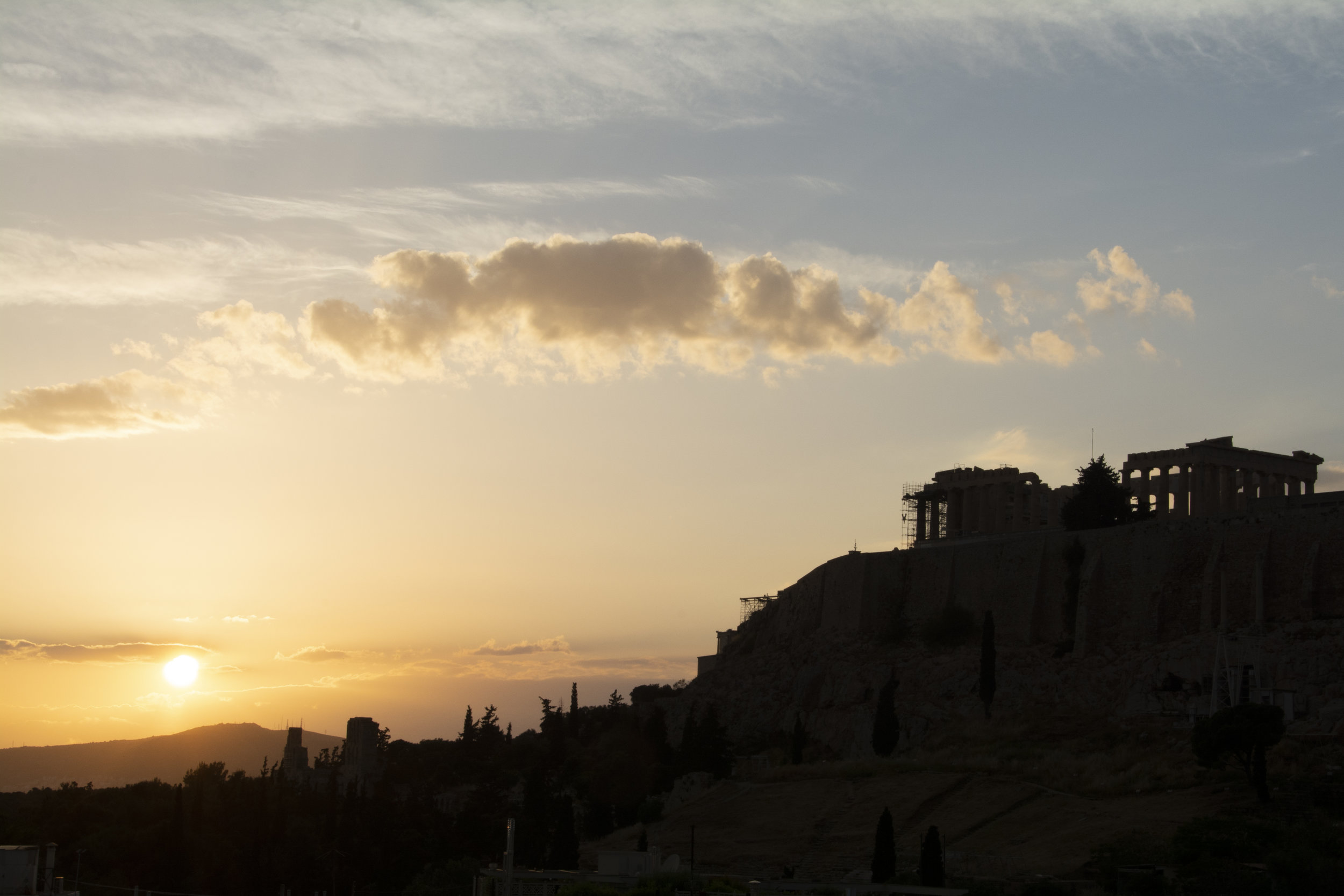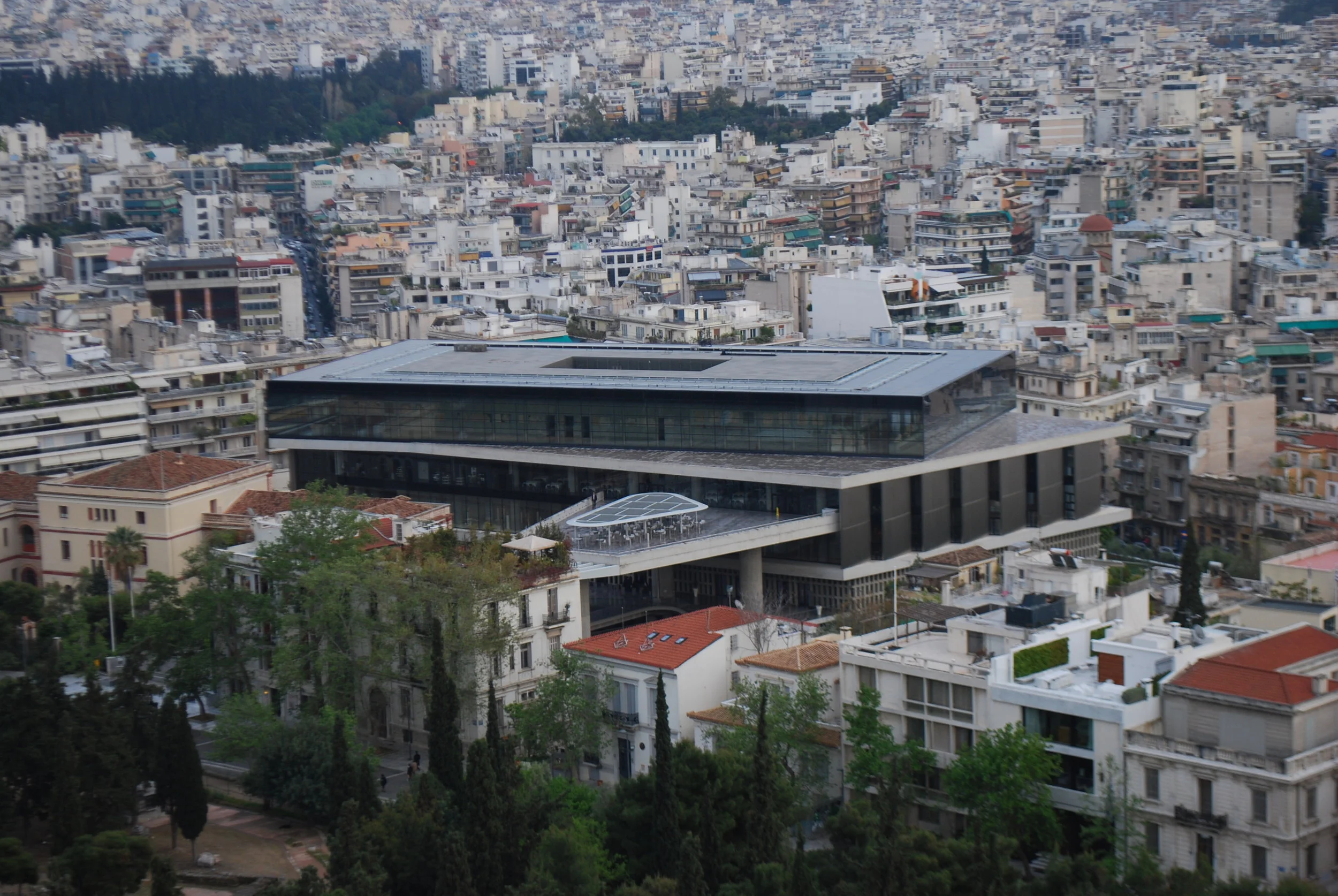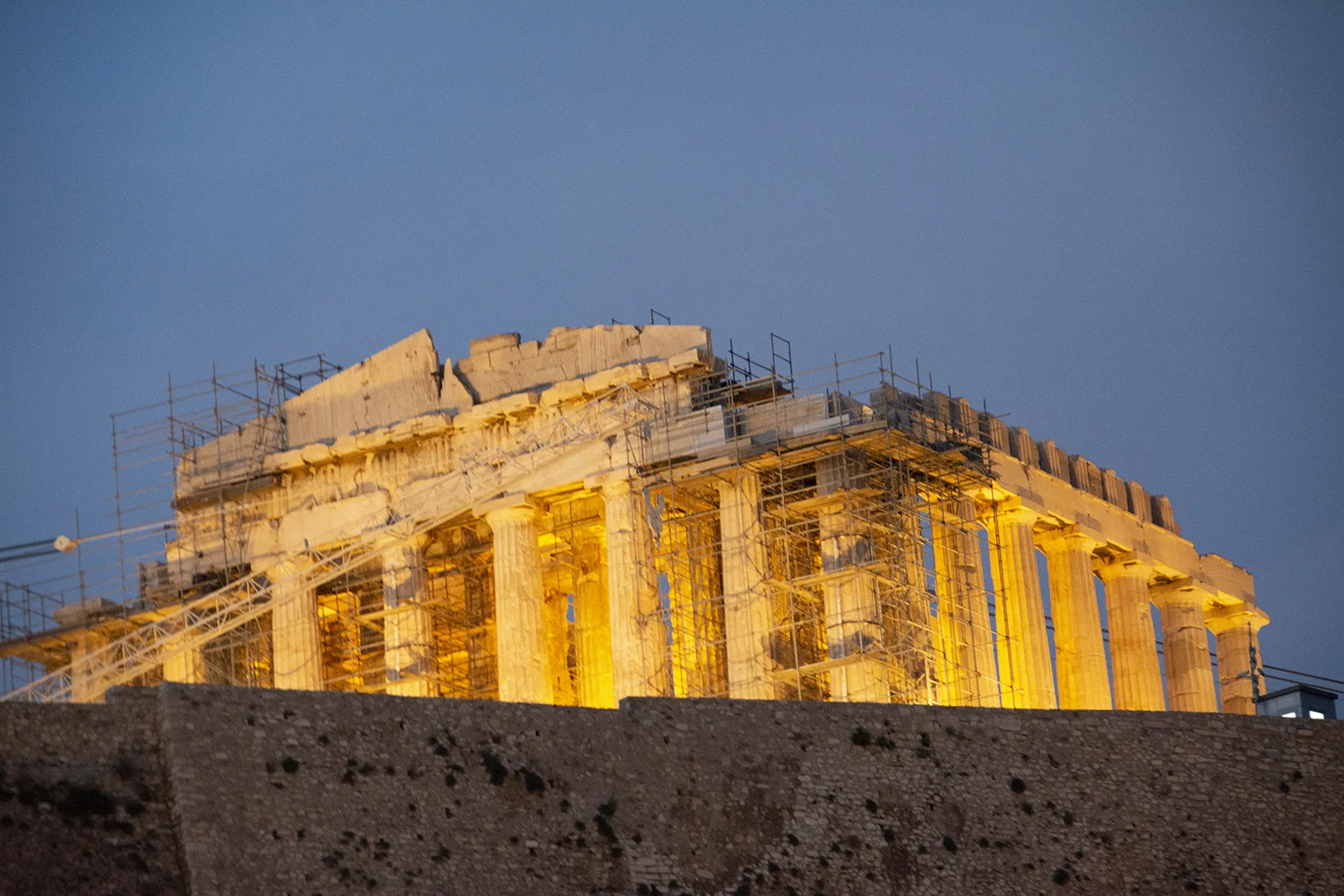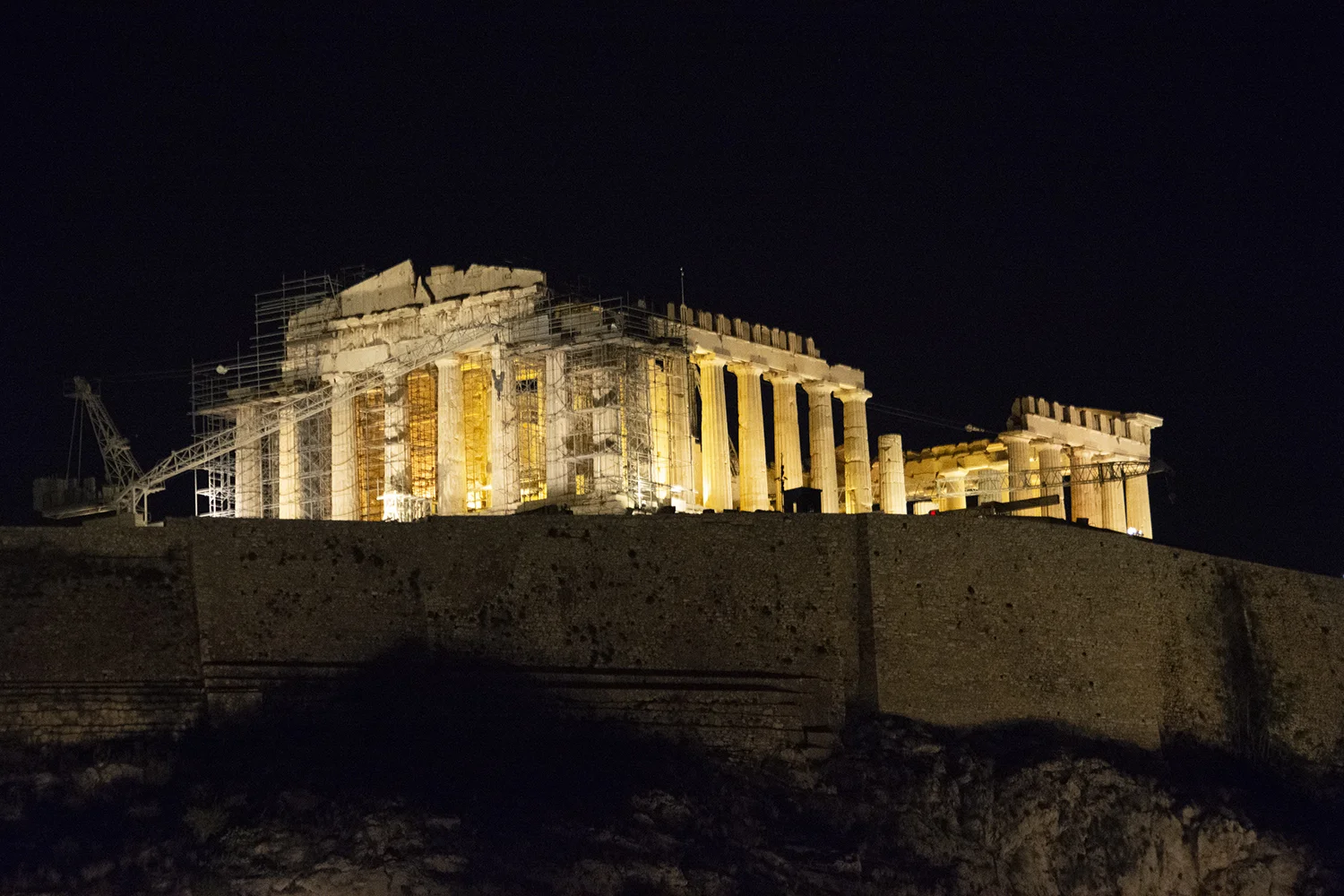Restaurant with a View
To discover a restaurant on your own in a foreign city can feel like a triumph beyond expectations. For some of us, it is an accomplishment, given the stress involved in traveling, the packing and forgetting of essentials such as socks, the dragging of too much luggage, the getting from here to there, the slow Uber driver, poor foreign language skills and all.
But then you stumble across a place where there’s interesting food and the kindness of strangers welcoming you into their piece of paradise. Stateside brethren are known to Google-search for American fare when they get dragged out of the country, missing one of the essential pleasures of travel. Some European restaurants even list “American Fare” which without looking must certainly include hamburgers and fries. On the other hand, ordering off the menu in a Paris brasserie near the Bastille and being delivered (with a waiter’s smirk) chunks still distinguishable as intestinal organs sheathed in pig skin, well there’s brave and then there’s rash optimism. I ate the freedom fries, my smiling wife asking, “was that enough?” Then we joined the Friday crowds packing the streets around the Bastille. Wall to wall youthful hip from sidewalk to sidewalk, bar to the next, the crowd made up for dinner.
In contrast, some restaurants with reputations can be letdowns–first the writeup in the travel guide by a writer you’ll never meet who wonders if he’ll finish his opus before he’s eighty but instead works for a travel magazine–then the navigation required to get there, encountering the maître de, is she glad to see you arrive earlier than expected or later stumbling in from the rain because the Uber driver thought he’d give you a bonus tour of the city?
One restaurant we found in Zurich was of the Italian variety. Only in the city for a few days, so every dinner counted. The restaurant came recommended, and we tried it. In truth, Fodor’s gets these reviews more right than not, and nailed this one. Wonderfully friendly, packed with guests and paintings for sale covering the walls. Casa Ferlin “Venetian fare in city center.” Fodor’s said that artists and writers had popularized the place back before World War II. Handmade ravioli is a signature entree. Which isn’t so strange, given northern Italy is just a quick train hop through the Alps from Switzerland. The other side of the Alp lies Lake Como, and Bellagio, my city of a dream. The dinners we had in Bellagio! You can bury me in the hills above Bellagio with the red Dahlias blooming. I’ll hang there with the ghosts of the Romans.
We returned a second night to Casa Ferlin just to make sure and hung out until closing. I don’t recall that it had Michelin stars, maybe one or two, but it was only a few blocks off the trolley line in an older part of the city with narrow sidewalks and quiet townhouses. The waiters were integral to the establishment as is true in any good restaurant, the wine was excellent and appetizers through dessert the same.
Casa Ferlin on Stampfenbachstrasse.
In Zurich, I practiced pronouncing street names. It became something of a game–trying out the run-together words that sound so cheerfully emphatic. To capture Zurich in a sentence would be ‘polite and self-possessed, quietly enjoying life.’ Cyclists of all ages negotiating the streets in the cool rainy springtime, people crossing just ahead of the rumbling trolleys, even the car traffic seemed competent and forgiving, much different from an American city. Swiss order is something tangible. Though the weather remained overcast the four days we were in Switzerland, and I never did get a great shot of an Alpine meadow.
Rhine Falls near Schaffhausen
There was no sky, so the whole of the shot is wet. Most pictures of the Rhine are of a majestic river flowing past medieval towns. In Switzerland, it’s not so serene.
Limmat River, Luzerne
The medieval bridge in mid-ground spans the Limmat River. An Orthodox church with onion-domes lies further back. Still no sun.
Skipping continents, in Kyoto we worked hard to find a highly praised sushi bar that took well over an hour to locate. My son, who was traveling with us, felt certain he could find it on Google. He understands Ms. Google’s intentions better than I. We understood the sushi bar was in a downtown area known for night clubs–and men’s clubs–which we learned were discretely tucked into small buildings only because we stumbled on several. In the first, we found the doorman just rousing from a nap, and in the second when we three entered, seeing D, the surprised greeter crossed his arms in an ‘X’ and shook them at her urgently, which translated suggested she wasn’t of the correct sex unless she was applying for a job. Not ours to judge, but no kidding?
Finally when we rode the minimalist elevator to the fourth (or fifth) floor and stepped out into the equally small lobby, we found three doors, none of them signed. Our last attempt, we were deciding to return to the street when the far door from the kitchen opened, a middle aged man peered out, and gestured us in. “There!” he pointed to the entrance, smiling.
Eight seats at the bar, and four were occupied by two couples. We took up three seats at the far end, discombobulated by the effort it had taken. Soon we learned why this modest, one chef sushi bar had such an oversized reputation. We all three chose the chef’s special. It was a revelation. The chef set down bowls of miso and we ordered sake, then he went about preparing sushi. He wielded his knife deftly, serving one customer’s piece at a time, introducing each by name. Some we recognized. None were anything but delicious.
The two couples, seeming close acquaintances, were engaged in their conversation. I remember they looked European. Sometime later they left, leaving the three of us with the chef. He spoke only a few words of English, and we spoke no Japanese, but it hardly seemed to matter. Through the windows behind him, the nightlife of Kyoto was continuing. We were living in the moment of one chef’s cuisine generously being shared with foreigners.
In the heart of Kyoto’s old town, not two blocks from Hotel Sunshine where we stayed, and not far from the sushi restaurant, we found a temple complex to wander through later that night. The restored Nishiromon Gate steps up from the street into a pedestrian zone of temples leading to a linear park beyond. Standing in the quiet nave of a gothic cathedral such as Notre Dame, or entering a master craftsman’s wooden Buddhist temple, I’m reminded that these spaces speak to the spiritual often more than the theologies they celebrate.
Shinto shrine in Kyoto
However, the restaurant that came to mind when I started this blog lies in a totally different city, in the cradle of another civilization, Athens to be precise, in May 2014. I mention the date because this was during the hard depression in Greece, when the country was in free fall economically and politically, the former driving the latter.
We secured a hotel room in the Athens Gate Hotel in an older part of the city where, if you leaned over the small balcony in early evening, the roar of the traffic, lorries and motorbikes, buses and scooters, was finally subsiding after dark, only to resume early next morning. From our balcony, I shot the ruins in the park across the street, of the Temple of Olympian Zeus, built by the Romans. It seemed out of place, this Roman ruin in the heart of Athens, but two thousand years later, perhaps the Athenians have forgiven those invaders; they do understand their history.
Temple of Zeus at Archeologikos Choros Olimpiiou in Athens
The giveaway that it’s Roman are the more slender columns with Corinthian order capitals.
The Athens Gate Hotel’s bar sat on the top floor with a view to the hills of the Acropolis, though the photos I tried of the Acropolis were disappointing due to the thick atmosphere and the lack of a long zoom lens.
Acropolis sunset
We’d been there a few days, hiked the Acropolis bottom to top and back down the north side, photographing what a million other tourists had seen before us. And searched for good restaurants. We found a string of restaurants within walking distance of the hotel, in the Makrigianni neighborhood. In the heart of old Athens, Makrigianni was busy with tourists.
This restaurant street runs along the eastern side of the new museum at the foot of the Acropolis [i] designed by the Swiss architect, Bernard Schumi. The Parthenon Gallery is a modern box done in black steel and glass sitting atop a more solid stone base, rotated to align with the skeletal remains of the Parthenon on the Acropolis high above.
To my eye, the dialogue between this severely modern structure and the slowly decaying one on the hill felt like one of the moments Dr. Cooledge had lectured on at Clemson. Cooledge would have said it was too soon to judge the modern architectural era, however he taught several generations the principals of urban design. Seen in context, the museum feels ‘right’ in the modern time. The Parthenon, on the other hand, was tragically blown up by artillery during a seventeenth century bombardment when it was being used to store ammunition. [ii]
War is as much hell on cities as those who live through it.
Jean Housen – his own work, CC BY-SA 3.0, https://commons.wikimedia.org/w/index.php?curid=32062569
Returning from dinner on the night in question, I took photos of the then-closed museum. In place of the famous frieze referred to as the Elgin Marbles now held in the British Museum, only plaster reproductions of Phidias’ great art exist in Bernard Schumi’s museum in Athens. What the Venetian bombardment began, Thomas Bruce, the Scot, aka Lord Elgin completed with his coup de grâce, his theft of half the Parthenon’s frieze. A valid argument is that Phidias never intended for his work to be anywhere but the Parthenon where he sculpted it; Elgin’s theft did violence to a famous sculptor’s art. Athenians deserve their patrimony returned.
Parthenon Gallery at night
This photo is taken from the same direction as the previous aerial shot. In the foreground are the steps and main entrance structure, seen from the north; the Acropolis to the viewer’s back. The singular invention of the glass curtain wall is the modern era’s greatest contribution to architecture.
The glass bridge spans over the semi-excavated ruins.
Earlier in the Makrigianni neighborhood, while at lunch we asked a waiter who the scurrying children panhandlers were. They were all of school age and this was middle of the week. One boy sawed on a violin, another wielded an accordion of sorts, while others just accosted tourists. The waiter said with disgust that they were probably gypsies, like flies to be swatted away. Another person said he thought they were refugees. No one mentioned the possibility that they were just poor Greeks. Given the shambles of the Greek economy, any and all of these were possible.
Though later on the same trip, in Istanbul we passed whole families sitting on downtown sidewalks dressed in their best, as if they’d just come from mosque, father, mother and children, and those we knew were Syrians, fleeing the insanity of their purported leader. In current times, the Middle East is still in flames. In the seventeenth century, the whole of the Mediterranean seemingly was. The poor and their children always suffer at the hand of the power broker de jour.
But in Athens, we worked to find dining establishments on our own, and one evening we stumbled on the restaurant that this discursive blog is leading to. In early evening, we started out from the hotel ten or so blocks, looking for a specific restaurant we’d read was worth trying.
The directions had us follow a broad, stone-paved pedestrian street known as Dionysiou Areopagitou that we returned to several nights, using it as a structuring armature in a city of chaotic, pre-medieval street patterns. A good many streets in old Athens run one or two blocks, turn, divide or disappear; this one was the exception. Dionysiou Areopagitou follows the serpentine toe of the Acropolis massif. On the north side of the street one strolls past the ruins of early Western history, and on the south elegant apartment buildings from the eighteen and nineteen hundreds. The street was closed to vehicles in 2003 and lovingly renewed with a streetscape worthy of the location.
I would happily put up with the wandering tourists to live in view of such a jeweled mount.
We’d been recommended to one restaurant, which we found, though on the one day a week the place was closed. Nearby we saw a sign for one other, and being hungry with evening fast coming on, we decided to wing it. Certainly not the intrepid travelers Paul Theroux says he traveled with in Dark Star Safari; we were more modestly daring.
The restaurant we ‘discovered’ was located in a mid-century apartment building around the corner from the closed one. The lower four floors appeared occupied by apartment dwellers or offices; it was hard to tell. We entered from Garivaldi Street, and though not far away, the Acropolis was already out of sight, blocked by the dense mid-rises along this street.
The winding stair to the top floor brought us to the restaurant. Attikos Greek House It appeared close to empty, which gave us pause–too early for cosmopolitan Athenians? But we were there, and the maître d’ was charming. He seemed happy enough to see us, so we felt the same. Would we like to sit out on the outdoor deck? Does a duck like to swim? With the fine spring weather, we figured if nothing more, we’d have a drink and enjoy the warm evening.
The maître d’ led us through a small dining area to the rear of the building.
The outdoor deck may have once been just the roof, though now it was transformed. Finished with cut stone and glass parapets, low lights and comfortable lounge chairs, it had a spectacular view of the Acropolis. Did I mention that evening was fast coming on?
We’re not unaware of being tourists, though we try to be discrete, not wanting to become the entertainment. We’d rather observe. Once, standing in the grand plaza of the Louvre, we were approached for directions, and we tried to oblige. But in a city as old as Athens, I took my camera with me even to dinner. If this was going to be the only chance I had to visit, I intended to take advantage.
Because the restaurant’s outdoor deck looked north to the Acropolis, now alight in the evening.
Parthenon Evening
The telephoto shot foreshortens the view, making the tall face of the retaining wall appear to be next to the Parthenon, although it’s well away from it. This was one of the photos I lost from one digital card; the second card hadn’t been corrupted. Let that be a lesson.
Once settled on the deck, my camera sat proudly on the table between the wine and hors d'oeuvres, all my discretion overtaken by tourist-y instincts. Surely better nighttime photographs of the Acropolis have been taken, but amazed at that view, the warm spring evening, being served fine food and beverage, I kept searching for shots. My camera was an older model digital, with a not-powerful zoom lens, and in dim light hard to focus. But I kept working it, greedy as a kid with ice cream. I’d run off five or six shots rapidly and return the camera to the table. Then pick it up again–was there a better shot just over there? D was patient, though she’d have rather I stopped before I did.
What do present day Athenians think of their city? How does living surrounded by these millennia of history affect your life, your world view? When you get up in the morning and look up at that massif, does it provide a reassurance that no matter the current day’s politics, economy, the wisdom of the ancient Greeks is in your heritage?
Parthenon Night
History to some today lies behind them, and seems they’d as soon leave it there. Truth is history is a slim portal glimpsing lives we’ll never otherwise know, of people who never knew us, who lived out their small, brief plots of existence, lived as deeply, possibly more than we in the present day.
I was sitting close to the steps of the Parthenon, wondering about times when Socrates taught there.
The Western world is in debt to those ancient Greeks for much of our culture, beginning with democracy and ending in timeless art. The least we can do is to hold the ancients in memory by showing their descendants charity.
Propylaea - gateway into the Acropolis
[i] NY TImes Christopher Hitchens’ “A Home for the Marbles”
[ii] “After the Ottoman conquest, it was turned into a mosque in the early 1460s. On 26 September 1687, an Ottoman ammunition dump inside the building was ignited by Venetian bombardment. The resulting explosion severely damaged the Parthenon and its sculptures. From 1800 to 1803,[11] Thomas Bruce, 7th Earl of Elgin removed some of the surviving sculptures, now known as the Elgin Marbles, with the alleged permission of the Turks of the Ottoman Empire.” Wikipedia page










